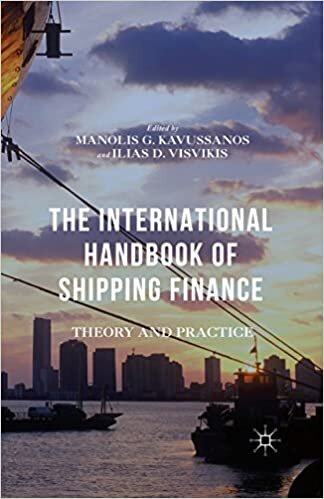
Offering an expansive source to the theory and practice of Shipping Finance, the book, “The International Handbook of Shipping Finance: Theory and Practice,” discusses the many facets of financing for the shipping industry. The book includes the following discussions:
- Appraisal and budgeting of shipping investment projects
- Legal and insurance
- Financial analysis and modeling of investment projects
- Mergers and acquisitions
- Commercial and market risk management issues
About the Authors
The book is made up of numerous independent, but interrelated topics on the Shipping field by experts within the industry. It was expertly edited by one Manolis Kavussanos, a Professor, Director, and has an MSc in International Shipping, Finance, and Management from the Athens University of Economics and Business in Greece.
Ilias Visvikis join him, also a Professor, Director Executive Education, and Professional Development, at the World Maritime University in Sweden.
Table of Contents
The book has the following content:
Chapter 1: Shipping Markets and their Economic Drivers
Chapter 2: Asset Risk Assessment, Analysis and Forecasting in Asset Backed Finance
Chapter 3: Overview of Ship Finance
Chapter 4: Shipbuilding Finance
Chapter 5: Debt Financing in Shipping
Chapter 6: Public Debt Markets for Shipping
Chapter 7: Public and Private Equity Markets
Chapter 8: Structured Finance in Shipping
Chapter 9: Key Clauses of a Shipping Loan Agreement
Chapter 10: Legal Aspects of Ship Mortgages
Chapter 11: Reasons and Mechanics of Handling Defaulted Shipping Loans and Methods of Recovery
Chapter 12: Marine Insurance
Chapter 13: Maritime Investment Appraisal and Budgeting
Chapter 14: Financial Analysis and Modelling of Ship Investments
Chapter 15: Maritime Business Risk Management
Chapter 16: Mergers and Acquisitions in Shipping
The book efficiently discusses pertinent matters technically should the content demands it, albeit still being grounded. Common opinion has it that “The International Handbook of Shipping Finance” is a book that every individual participating in the shipping industry should have. It is seen as a comprehensive reference for bank practitioners, commodity trading houses, shipbrokers, lawyers, and insurance houses.
